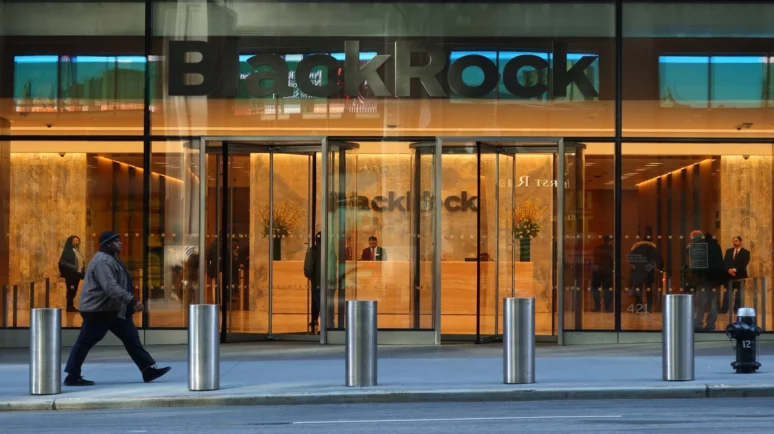Bitcoin ETF Inflows Drying Up is Not Unexpected as BlackRock Records First Day Without Money In

BlackRock's Bitcoin ETF Was Hit with First Outflow. | Credit: Pixabay
Key Takeaways
- BlackRock’s Bitcoin ETF hit with first outflow since its launch in January.
- The current stagnation in daily inflows across most Bitcoin ETFs isn’t particularly surprising.
- Market jitters impact investment, but a return to an upward momentum could soothe nerves in future.
According to preliminary data from Farside Investors, for the first time since its launch on January 11, IBIT did not attract any new investor money, ending a continuous 71-day streak of inflows. This downturn in Blackrock’s Bitcoin ETF was mirrored by seven out of the other ten funds tracked.
The current stagnation in daily inflows across most Bitcoin ETFs reflects broader market trends and isn’t particularly surprising, given recent shifts in investor sentiment and market dynamics.
Investor Appetite Shifts, GBTC and BlackRock Lose Favor
In contrast, Fidelity’s FBTC and the ARK 21Shares Bitcoin ETF (ARKB) managed to attract new investments, with inflows of $5.6 million and $4.2 million, respectively.
Meanwhile, Grayscale’s Bitcoin Trust (GBTC) faced significant withdrawals, losing $130.4 million. This led to a cumulative outflow of $120.6 million for GBTC, marking the highest outflow since April 17. This mixed performance among major Bitcoin funds suggests a shifting landscape in cryptocurrency investment preferences.
The launch of spot Bitcoin ETFs in the US on January 11 was met with significant enthusiasm, because these funds were expected to attract substantial institutional investment. Indeed, BlackRock’s IBIT quickly accumulated over $15 billion, contributing heavily to the more than $12 billion net inflow seen across all 11 funds combined.
Cryptocurrency Correction? Bitcoin Trades Flat After Surge
Despite this strong start, most of the inflows were concentrated in the first quarter of the year, with a noticeable slowdown occurring this month. This deceleration in investment momentum has affected the broader Bitcoin market, which has seen its bull run lose steam.
Bitcoin has been trading mostly between $60,000 and $70,000 in April. This represents a modest performance following the first quarter’s significant 70% rally, which saw prices reaching record highs above $73,500.

Beyond the Hype – Zero Inflows Highlight Market Shift
The lack of daily inflows into most Bitcoin ETFs isn’t an isolated incident. Neither is it particularly unusual within the current market context. According to data from Farside Investors , the trend of zero daily inflows was prevalent across the board, except for a couple of funds.
A belief that central banks are in the final stages of their battle against inflation has influenced market sentiment. This was reinforced by the dovish statements made by central banks during and after their respective meetings. However, the US Federal Reserve’s remarks in January regarding the potential timing and pace of interest rate reductions may have surprised some investors, leading to adjustments in their expectations. This could have affected estimated inflows into bond ETFs, as investors reassessed their outlook on bonds amidst concerns about persistent inflation and the possibility of a recession in major economies.
Furthermore, worries about sluggish economic growth and the presence of long-term inverted yield curves have heightened concerns about a potential recession. Inverted yield curves often an early warning sign of economic downturns. The normalization of these curves poses another short-term challenge for bond markets.
Bitcoin ETFs See Outflows, Investors Rethink
Recent trends in Bitcoin ETFs demonstrate a notable shift in market sentiment. There has been a significant slowdown in inflows and even some notable outflows. This trend has sparked concerns about the potential volatility and investor caution in the cryptocurrency market. For instance, Bitcoin spot ETFs experienced their third net outflow since their launch, reaching new highs in outflow volumes. At the same time, investors are possibly reevaluating their strategies amid market uncertainties.
Despite these outflows, some ETFs, like BlackRock’s IBIT, have seen strong inflows even amid broader market downturns. This suggests that investor sentiment can vary significantly between different funds. The mixed reaction in the ETF landscape reflects the complex and often unpredictable nature of the cryptocurrency investment scene.
Overall, the dynamic and sometimes tumultuous nature of Bitcoin ETFs underscores broader sentiment in cryptocurrency markets. There, investor confidence can shift rapidly, leading to significant price volatility and changes in investment patterns.


